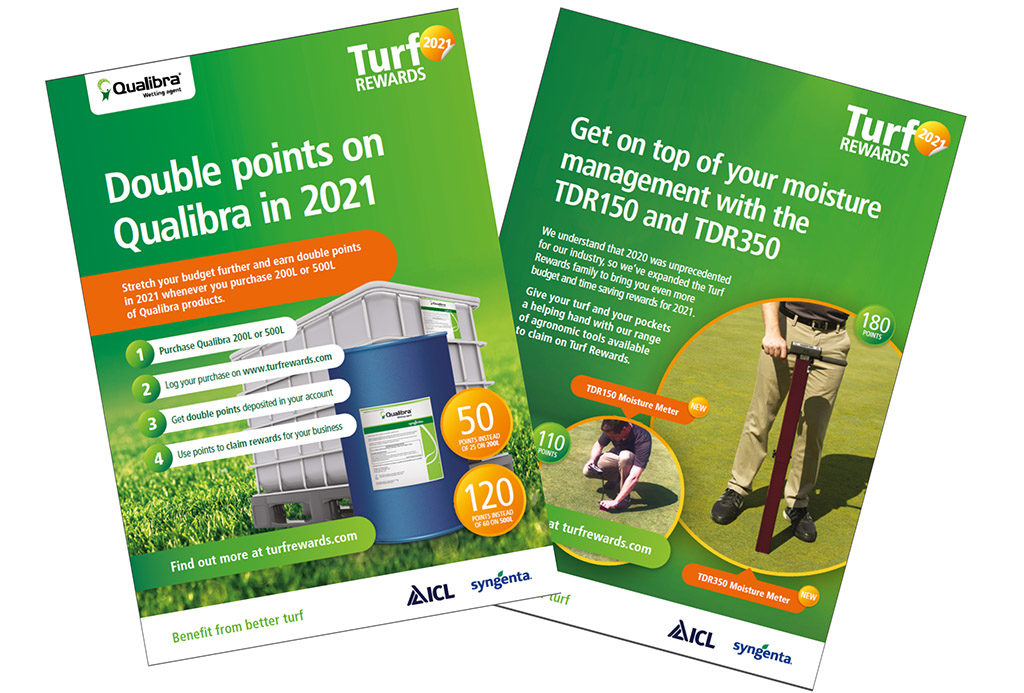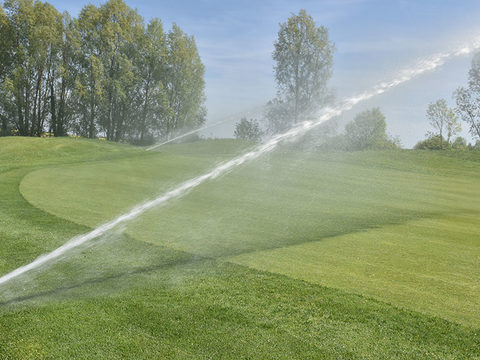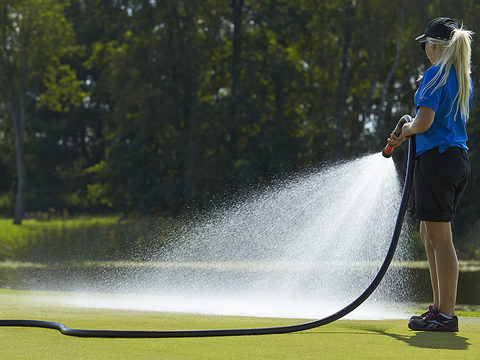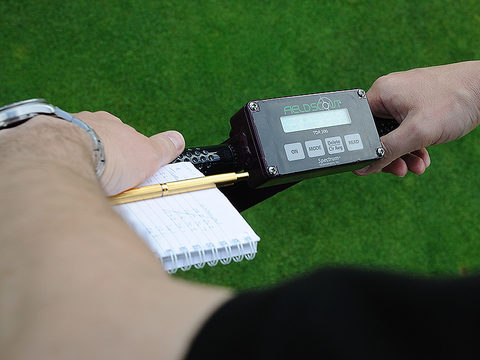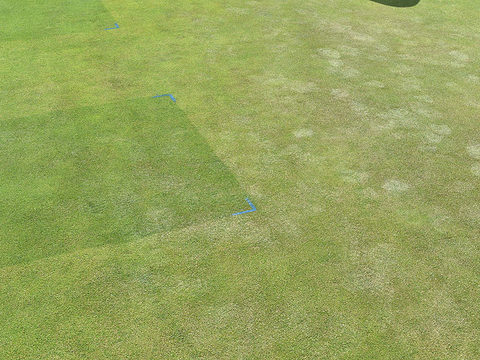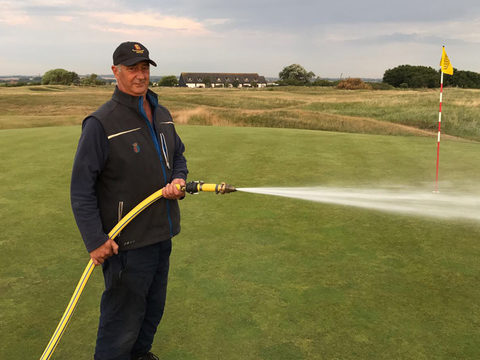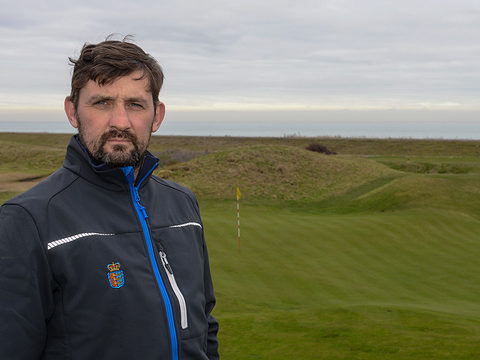Get ahead of the dry down curve this spring
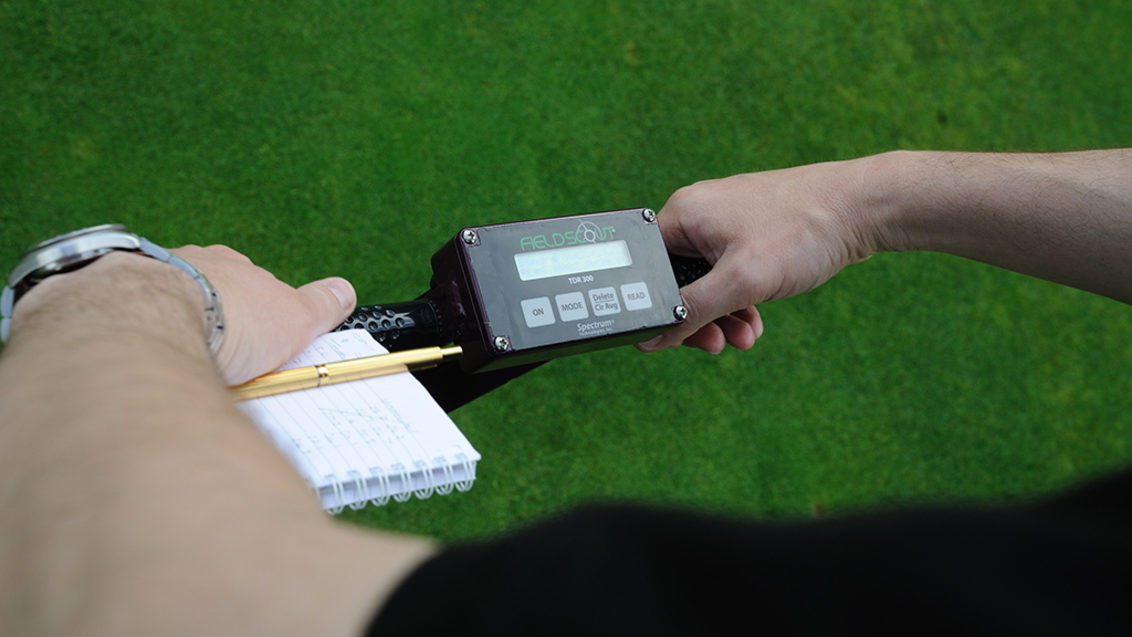
Last winter experienced some of the wettest conditions on record, yet by mid-March soil moisture deficits could be seen putting turf under stress.
It is very easy to get caught out by just how fast conditions dry out, and how quickly the stress of moisture deficits start to impact on turf health, writes Syngenta Technical Manager, Glenn Kirby in the latest Greenkeeper International InSight feature.
Soil Moisture Deficit (SMD) is calculated from the amount of water coming in from rainfall; less the amount going out from evapotranspiration of vegetative cover; with an allowance for the water holding capacity of the soil.
For turf, the variables of irrigation, artificially free draining sand constructions and the management of cutting height all have significant influence on the SMD and its implications for plant vigour.
The data in Fig 1 shows rainfall minus evapotranspiration rates, or effectively the dry down curve, for Coventry over the past six years.
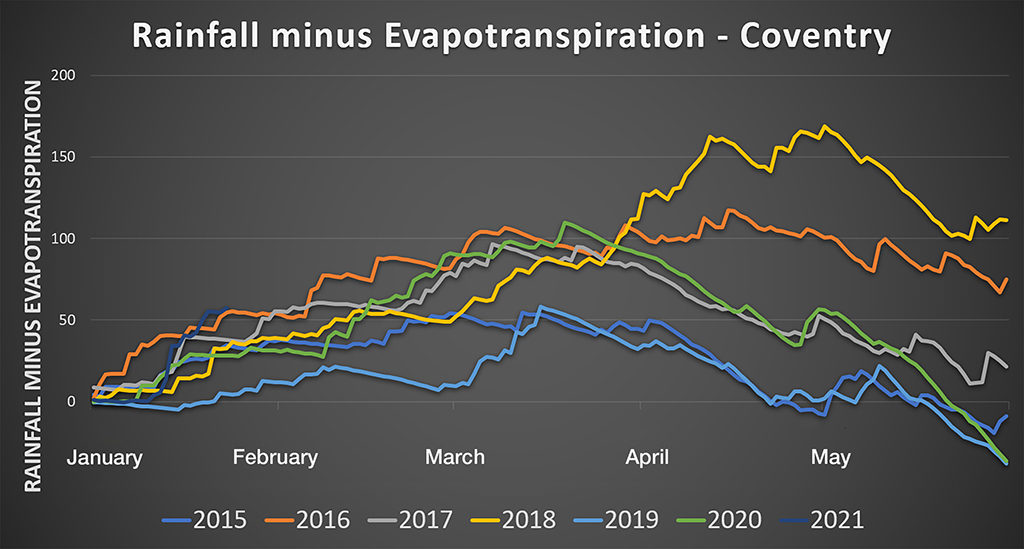
It highlights how, as evapotranspiration rates ramp up with the onset of growth and longer days, we pretty much always go into the steep decline at some stage over the spring – the challenge is identifying just when that is happening and how quickly it will hit turf stress and quality.
Physiologically, when evapotranspiration exceeds available water, turf plant leaves begin to wilt within hours.
Under normal conditions turf plants could typically recover from short periods of SMD, when temperatures cool and plants are rehydrated. With intense management of golf courses, particularly greens and tees, however, the combination of wilt and heavy traffic of play can result in permanent damage.
The issue is exacerbated since, as soils dry, they heat up faster to greater depth. Research at the University of Massachusetts has indicated the optimum soil temperature for roots of cool season grasses is just 10 – 18⁰C – which is some 6⁰C below the optimum for foliar growth. It is one of the key reasons we frequently see rapid root mass decline, resulting in greater susceptibility to moisture deficit and multiple other stresses.
The work showed that the better soil moisture could be consistently retained in the soil profile, the less the effect on turf rooting and the improved retention of turf quality.
Understanding a green’s dry down rate is crucially important. Each green, and every area of that green, will dry down a slightly different rate. Syngenta trials undertaken last spring, to evaluate soil moisture probes, highlighted on three different greens on the same course, as one approached the target 30% soil moisture, two others were six to eight days behind.
Utilising wetting agent technology can help to even out these dry down rates to your target moisture content, and achieve more consistent surfaces. This is important for both agronomic reasons and consistent putting surfaces.
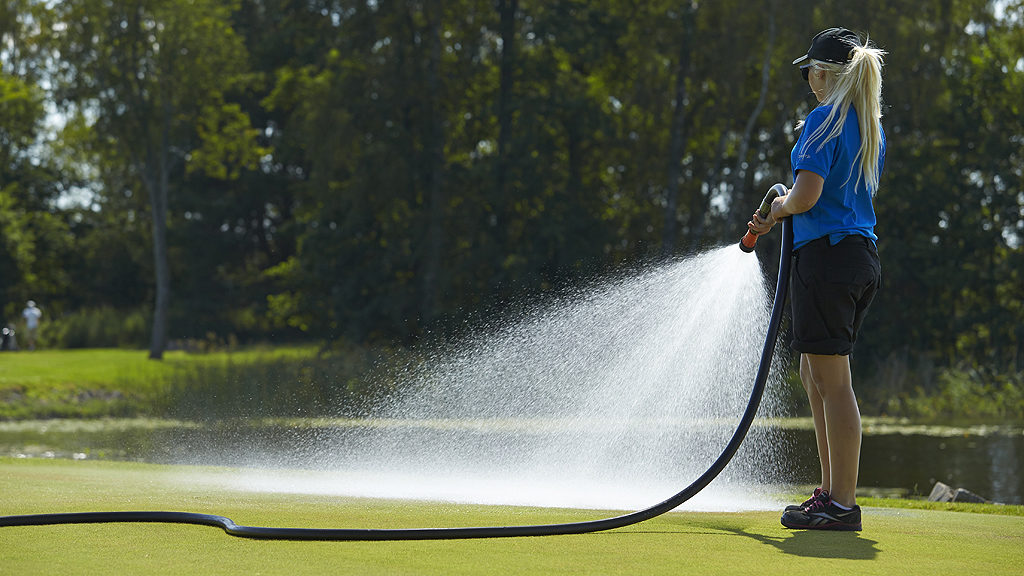
Starting these programmes early in the season is vitally important to dry the surface out slowly.
Where moisture contents have been high all winter, a sudden dry down won’t be welcomed by the plant and can easily lead to hydrophobic areas of soil that won’t show signs of stress until temperatures rise.
Importantly for the spring season, as we initiate dry down management, STRI research with Qualibra wetting agent has shown that it did successfully hold optimum moisture in the root zone for longer in drying conditions. Furthermore, when high rainfall incidents were simulated with heavy irrigation, the treated soils did not hold any excess moisture. That can help to assure both turf health and playing surface consistency.
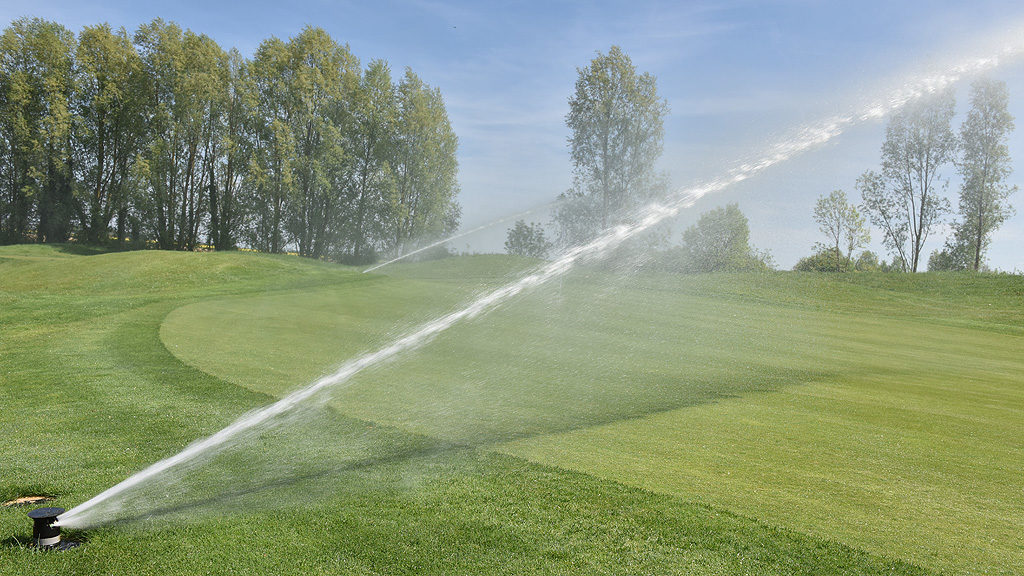
To get the best out of any wetting agent, the soil profile needs to have good even moisture at the time of application for the product to spread through. It also benefits from water to push the product into the profile. Waiting too long can result in less than optimum results.
On that note, if you are making an application of wetting agent on its own, or with soil nutrition, the best approach would be using a higher water volume and an 08 XC Nozzle to move the spray down to the surface.
Irrigating immediately after application to wash the spray down, or even applying in light rain, has been shown to give good results.
Whilst experience will know what areas of the course are most likely to dry out quickly, new agronomy tools are available, or in development, that will enable a better understanding of dry down rates, and their implication for management practices.
Claim a new moisture meter with Double Points on Turf Rewards with Qualibra. Just one IBC purchase can earn a latest TDR150 meter
Click above for more details, or visit the Turf Rewards website
Moisture meters are an extremely valuable first step to tell you exactly how turf is responding to prevailing conditions at any time.
If you start to regularly take and record readings, then it builds up a picture of the progression of dry down.
Add to that a scouting recording tool on your phone, that will GPS where you take the measurements, whilst at the same time recording observations of the impact on turf, and you can create a picture, or map, of the interactions. Over several years you build up a really valuable asset of how individual areas around the course respond to soil moisture deficits.
With that knowledge, the next step could be the installation of soil moisture probes to continuously record data remotely. Then you can start to see what is happening precisely on your course, and predict how other areas will change and perform over the coming days and weeks.
Having the ability to use trend data, to forecast how things are drying out, is exceptionally powerful to aid decision making.
Now, the GreenCast website is set to launch a new weather modelling and tracking service to map changes in key aspects affecting turf management – including soil temperature; rainfall and active evapotranspiration data. It will give a clear picture of potential soil moisture deficit conditions in real time and forecast.
Armed with that information you can start to see problems before they occur and to take proactive decisions to tailor moisture management across the course and, with improved root retention, set turf up to better withstand the stresses of the summer season.


